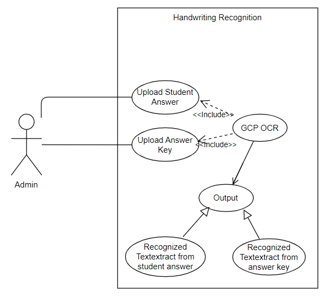Eval - Automatic Evaluation of Answer Scripts using Deep Learning and Natural Language Processing
Keywords:
Natural Language Processing (NLP), Bidirectional Encoder Representations from Transformers (BERT), third generation Generative Pre-trained Transformer (GPT-3), Long short-term memory (LSTM), Support Vector Machine (SVM), Convolutional Neural Network (CNN), Gradient-Boosted Decision Trees (GBDT), Natural Language Toolkit (NLTK)Abstract
Professors face a lot of difficulties when it comes to correcting handwritten answer booklets manually. It is both time consuming and labour intensive. As a solution to this problem, the paper proposes a system that automatically evaluates answer booklets, thereby saving time and effort. The proposed method involves using Deep Learning and Natural Language Processing techniques to automate the evaluation process. The first step is to extract the handwriting from input image files using an existing GCP OCR (Google Cloud Platform - Optical character recognition) text extract model, which has superior accuracy and performance to other models. It also uses various Natural Language Processing techniques such as BERT (Bidirectional Encoder Representations from Transformers) to extract keywords; and GPT-3 (Generative Pre-trained Trans- former 3) to summarize long answers. This method has been observed to assign marks that are usually identical to hand- evaluated marks. This paper also proposes a web application that simplifies the process of evaluating answer scripts. The web application generates the text extracted from both the student’s answer and the answer key image files, the summary of the student’s answer and the marks obtained based on the extracted keywords.
Downloads
References
P. Bojja, N. Velpuri, G. K. Pandala, S. Polavarapu, and P. Ku- mari, “Handwritten text recognition using machine learning techniques in application of nlp,” International Journal of In- novative Technology and Exploring Engineering (IJITEE) ISSN, pp. 2278–3075, 2019.
J. Sueiras, V. Ruiz, A. Sanchez, and J. F. Velez, “Offline continuous handwriting recognition using sequence to sequence neural networks,” Neurocomputing, vol. 289, pp. 119–128, 2018.
R. Boorugu and G. Ramesh, “A survey on nlp based text sum- marization for summarizing product reviews,” in 2020 Second International Conference on Inventive Research in Computing Applications (ICIRCA). IEEE, 2020, pp. 352–356.
H. Shukla and M. Kakkar, “Keyword extraction from educational video transcripts using nlp techniques,” in 2016 6th International Conference-Cloud System and Big Data Engineering (Conflu- ence). IEEE, 2016, pp. 105–108.
G. Sanuvala and S. S. Fatima, “A study of automated evalu- ation of student’s examination paper using machine learning techniques,” in 2021 International Conference on Computing, Communication, and Intelligent Systems (ICCCIS). IEEE, 2021, pp. 1049–1054.
S. S. Singh and S. Karayev, “Full page handwriting recognition via image to sequence extraction,” in International Conference on Document Analysis and Recognition. Springer, 2021, pp. 55–69.
B. Balci, D. Saadati, and D. Shiferaw, “Handwritten text recog- nition using deep learning,” CS231n: Convolutional Neural Networks for Visual Recognition, Stanford University, Course Project Report, Spring, pp. 752–759, 2017.
T. Bluche, H. Ney, and C. Kermorvant, “A comparison of sequence-trained deep neural networks and recurrent neural net- works optical modeling for handwriting recognition,” in Interna- tional conference on statistical language and speech processing. Springer, 2014, pp. 199–210.
S. Preetha, I. Afrid, S. Nishchay et al., “Machine learning for handwriting recognition,” International Journal of Computer (IJC), vol. 38, no. 1, pp. 93–101, 2020.
A. Garg, M. K. Jindal, and A. Singh, “Offline handwritten gurmukhi character recognition: k-nn vs. svm classifier,” Inter- national Journal of Information Technology, vol. 13, no. 6, pp. 2389–2396, 2021.
S. Meshram and M. Anand Kumar, “Long short-term memory network for learning sentences similarity using deep contextual embeddings,” International Journal of Information Technology, vol. 13, no. 4, pp. 1633–1641, 2021.

Downloads
Published
How to Cite
Issue
Section
License

This work is licensed under a Creative Commons Attribution-ShareAlike 4.0 International License.
All papers should be submitted electronically. All submitted manuscripts must be original work that is not under submission at another journal or under consideration for publication in another form, such as a monograph or chapter of a book. Authors of submitted papers are obligated not to submit their paper for publication elsewhere until an editorial decision is rendered on their submission. Further, authors of accepted papers are prohibited from publishing the results in other publications that appear before the paper is published in the Journal unless they receive approval for doing so from the Editor-In-Chief.
IJISAE open access articles are licensed under a Creative Commons Attribution-ShareAlike 4.0 International License. This license lets the audience to give appropriate credit, provide a link to the license, and indicate if changes were made and if they remix, transform, or build upon the material, they must distribute contributions under the same license as the original.





